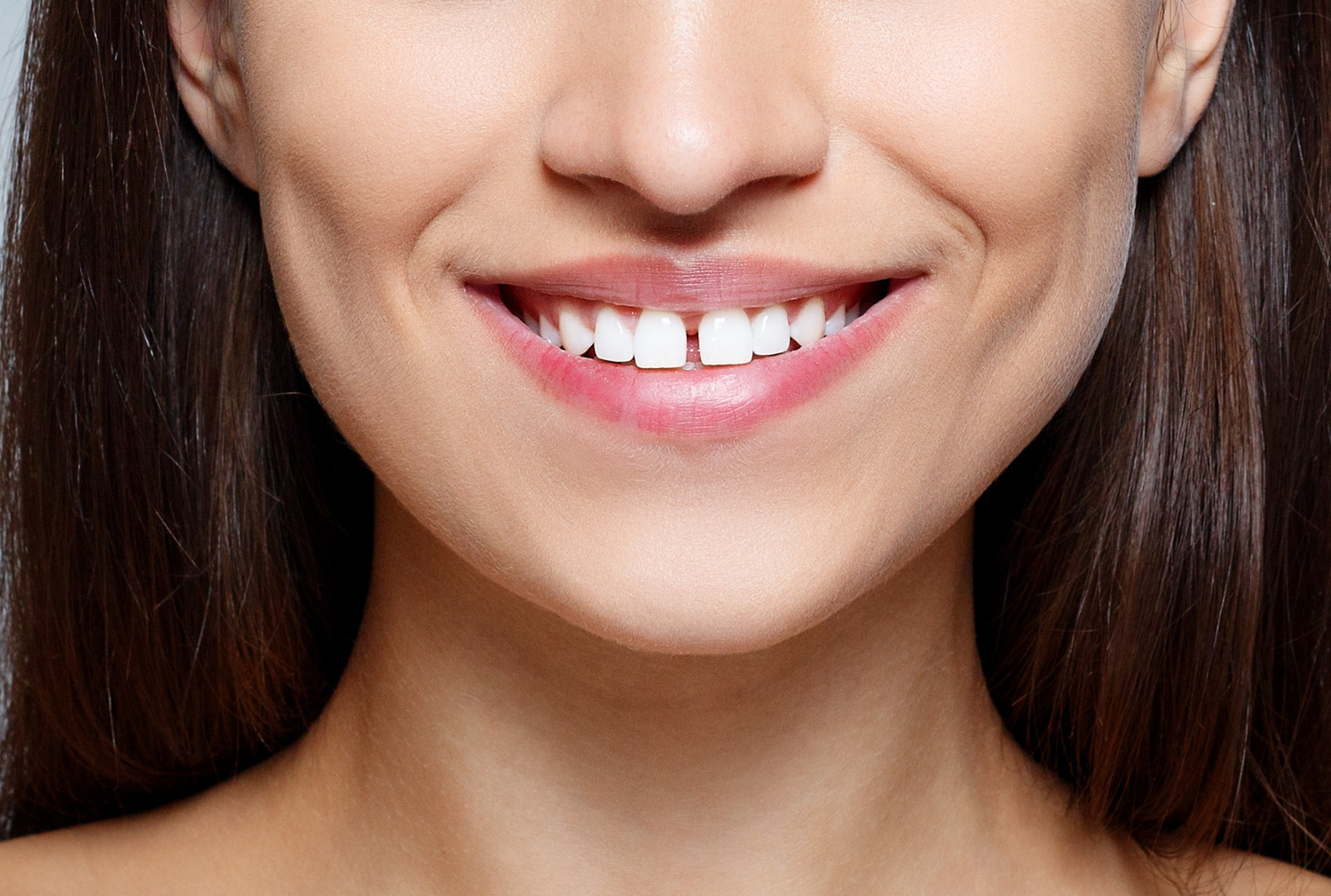Does having a gap between your front teeth hold you back from smiling confidently? This gap, known as a diastema, can happen due to various reasons like dental habits, the size of your teeth or jaw, or even genetics. The good news is that there are ways to address it. From orthodontic solutions that gradually align your teeth to cosmetic treatments that enhance your smile, multiple options are available to suit different needs and preferences.
In this post, we’ll explore how you can close a gap in your teeth. Whether you’re considering braces, aligners, or quick fixes like veneers, we’ll guide you through the choices. Let’s dive in and uncover the solutions that could help you smile with ease!
What is Diastema?
Diastema is simply a gap or space between two teeth. While it can happen anywhere in the mouth, it’s most noticeable between the two upper front teeth. This condition can affect both kids and adults. In children, these gaps often close on their own as their permanent teeth come in.
The size of these gaps can vary. Some are small and barely noticeable, while others are larger and might bother some people for cosmetic reasons. If the gap bothers you, there are different treatments available to either close or reduce the size of the gap.
While diastema isn’t harmful in most cases, it’s worth discussing with a dentist if it affects your confidence or if you suspect it might be related to underlying dental problems.
What Causes Gaps Between Teeth?
Tooth formation and position are affected by fraenula, a type of connective tissue. Strings of these tissues connect different areas of our mouth such as the tongue, cheeks and inner lip. Fraenula also guide the growth of our oral structure and help position teeth.
Two kinds of fraenula can cause gapped teeth:
Maxillary Labial Fraenum
The inner part of the top lip is attached to the front upper gum with this fraenum, which you can feel between your upper teeth and inner lip. If this fraenum is positioned too low down the gum, it can cause a gap between the front teeth in your upper jaw.
Lingual Fraenum
The tongue is attached to the bottom of the mouth with this fraenum. A restrictive lingual fraenum can prevent the tongue from sticking out past the lips, causing a condition known as tongue-tie. In severe cases, this can cause a gap between the front teeth in your lower jaw.
Other possible causes of teeth gapping include:
Development of Teeth
When they first start erupting from the jaw, teeth have spaces between them that are closed after canine teeth erupt.
Missing Teeth in Jaws
If children are born with one or two missing teeth in their jaw, there may be a space between baby teeth or permanent teeth later.
Extra Teeth/Crowding
If children are born with extra teeth in their jawbones, these may prevent other teeth from erupting or need to be removed, leaving a gap.
Jaw/Tooth Size
If a child has a large jaw as compared to the size of their teeth, there may be gaps. Small teeth may also leave spaces between them.
What are the Symptoms of Diastema?
As mentioned earlier, the main sign of diastema is a noticeable gap between your teeth. This gap can occur naturally or due to other factors like gum disease.
If gum disease is the cause, you might notice your teeth becoming loose, which can lead to pain or discomfort, especially when eating. Along with this, there are other signs of gum disease to look out for, including:
- Gums that are bright red instead of pink
- Swollen and tender gums that may feel sensitive
- Gums that bleed when you brush or floss
- Receding gums, where they pull away from the teeth
- Persistent bad breath
- Teeth that feel loose or unstable
If you notice any of these symptoms, it’s a good idea to see a dentist for advice and treatment.
Are Tooth Gaps Permanent? Do They Cause any Complications?
Gaps between teeth may close by themselves in certain cases. For instance, if a baby has a low maxillary labial fraenum, their baby teeth could have gaps at first. The fraenum may shorten by the age of one, while more teeth coming in close the gaps. With permanent teeth, erupting back molars can push the rest of the teeth together.
However, if the gaps don’t close on their own, they can cause complications such as:
Cosmetic Concerns
Gapped teeth can lead to embarrassment and self-consciousness, causing you to try and hide your teeth while speaking or smiling.
Bite/Alignment Issues
Large gaps between front teeth can reduce the space available for other teeth, causing overbites/underbites and jaw alignment problems.
Dental Health/Oral Hygiene Problems
Spaces between teeth can leave your gums exposed to injury, as well as raise the risk of gum disease by trapping food in them.
What are the Orthodontic Treatment Options for Gapped Teeth?
Orthodontics offers various solutions for teeth gapping, including:
-
Braces for Teeth
Braces are one of the most common treatment options to close the gap in teeth. The orthodontist will glue the track of your braces to your teeth. The steel wires attached to braces are used to correct the positioning of the teeth. You might need to go multiple times for regular check-ups and to tighten braces during your treatment duration.
Braces treat gapped teeth in a maximum of 36 months. They put gradual but constant pressure on your teeth during this duration to align your teeth.
Learn More About Braces
Discover how braces can transform your smile and help close gaps in teeth.
-
Invisalign
Invisalign is a popular choice for closing the gap in teeth because they are virtually invisible. It is a set of clear plastic custom-made aligners. These aligners are changed every few weeks according to the recommendation of your orthodontist. It perfectly works for the minor gap between teeth. Sometimes a combination of veneers and aligners works for closing significant gaps in teeth.
The duration of Invisalign treatment entirely depends on the condition of your gapped teeth. But generally, it takes 10-18 months.
Discover how Invisalign can transform your smile.
-
Veneers
Cosmetic veneers are considered a suitable treatment to treat an enormous gap between the teeth. It’s a thin shell of porcelain attached to the front of your teeth. They are customized according to your teeth’ shape, size, and color to make them look more natural. It requires a bit surface of your teeth to shave off to get fit in. This is the only drawback to the otherwise perfect dental treatment to close the gap in teeth.
It is also famous for being a treatment with minimum visits required. One more advantage of wearing veneers is they are stain-resistant. So you can drink your coffee and wine without staining your white and bright veneers.
-
Removable Appliances
Removable appliances like orthodontic plates and aligners bring the gapped teeth closer. They take less time to close the gap in teeth than braces, i.e., less than 6 weeks. And they are cheaper as well. Removable appliances appear the same as orthodontic retainers. These appliances are wired around your teeth. They usually have spring at their back. It pushes your front teeth closer from all angles.
Like aligners, you need to wear removable orthodontic appliances for at least 20-22 hours a day. Your dentist will make scheduled adjustments to them.
How to Prevent Gap Between Teeth?
While not all cases of diastema can be avoided, there are a few things you can do to reduce the chances of developing one:
- Break Bad Habits: If your child sucks their thumb or engages in any other habits that could affect their teeth, try to help them stop. These habits can contribute to gaps between the teeth.
- Good Oral Hygiene: Brush your teeth at least twice a day and floss once a day. This helps prevent gum disease, which can sometimes cause teeth to shift and create gaps.
- Regular Dental Checkups: Visit your dentist for cleanings and checkups. Even if you brush and floss regularly, there may still be plaque that you can’t remove on your own. Plaque can harden over time, and only a dentist can clean it properly.
Closing Thoughts
Having a gap in your teeth, while common, doesn’t have to hold you back from feeling confident about your smile. Whether your diastema is due to genetics, dental habits, or other factors, there are plenty of options to help you close or reduce the gap. From orthodontic treatments like braces and aligners to cosmetic solutions like veneers, you have choices that can fit your lifestyle and needs. If a gap between your teeth is affecting your confidence or causing discomfort, it’s always a good idea to consult with a dentist. With the right treatment, you can achieve a smile that feels as good as it looks.
Say Goodbye to Gaps, Hello to Confidence! Schedule a consultation with us to find the best solution for your smile.
FAQs
-
How long does it take to close a gap in teeth with braces?
Typically, braces can close a gap between your teeth in six to nine months. However, the time it takes can differ depending on several factors like the size of the gap, the condition of your teeth and gums, and how closely you follow your orthodontist’s instructions. Some gaps might take longer to close, while others may close more quickly.
-
Can the gap between my teeth get bigger as I age?
In most cases, the gap between your teeth won’t get larger as you get older if your oral health is in good shape. If you start noticing that the gap is becoming wider over time, it’s a good idea to check with your dentist. This could be a sign of gum disease or other dental problems that may need to be addressed.

Dr. Brian Thurman has spent his entire life enjoying all the beauty that California has to offer. A Fresno native, he still escapes to the ocean or the mountains whenever his busy schedule allows. Driven by his love for natural beauty, Dr. Thurman enjoys creating beautiful smiles and healthy bites that last a lifetime. He is proud to be the only Ivy League trained Orthodontist in the Fresno/Clovis area.

